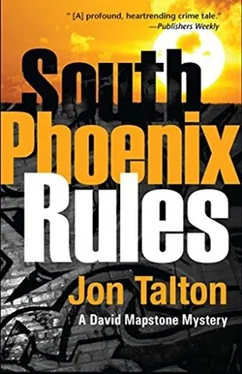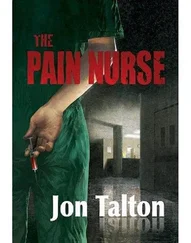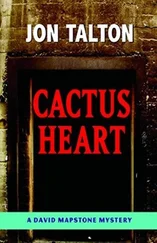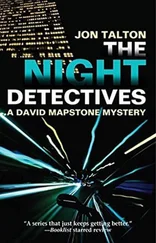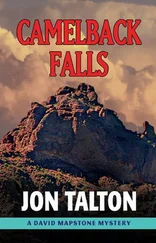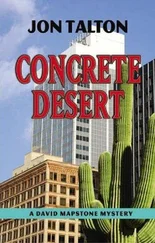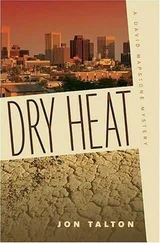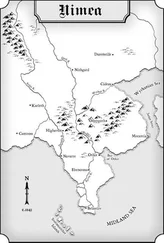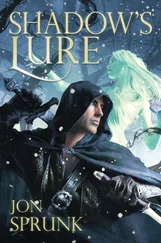I repeated, “I still can’t believe this. Why here?”
“I like it. The freight trains go by. I’m near my people. You know, I’m just a simple campesino .”
“Who went to Harvard,” Robin said.
He lowered his head and squinted at me. “Where’s your cannon?”
“I’m learning to love the Five-Seven.” The semi-automatic was tucked in my jeans, in the small of my back, concealed by my shirt. February, which was once the sweetest month in Phoenix, had come in hot, with today’s temperature near ninety. I wished that I had worn a short-sleeve shirt.
“Good.” He reached in a desk drawer and slid across a laminated card. “You won’t need this once the Legislature makes everything connected to guns legal, but here’s your concealed weapons permit.”
“But I didn’t…”
“Sure you did. I had you sign the paperwork for it the day you resigned.” I was irritated but reached over and took the card. He said, “So, give me an update?”
It didn’t seem as if there was much to tell. We had survived January, with no more scares, no more watchers sitting on the street at night. Sometimes I had seen a marked PPD unit drive down the street, but it could have been routine patrol. Vare had not even checked in with a phone call. When I called her to get an update, I was told to leave a message. It was, of course, never returned.
He put his elbows on the desk and folded his fingers in front of his face as I talked.
In a way, the lack of action had made the tension worse. But I had kept my anxieties to myself. Robin had become more comfortable, the trauma of opening the FedEx box receding. We held long discussions about the Great Depression-she knew much about the art and artists of the era-and comparisons with things now. She laughed more easily. She had a great laugh, uninhibited and delightfully distinctive. I could find her in a crowd just by her laugh. Although we relaxed some of the house rules-I was getting the mail and newspapers now-I tried not to let us get careless. I wouldn’t let her sunbathe outside and she complained that her tan was fading, but the result was quite attractive, at least to me.
…Oh, and I’m sleeping with my sister-in-law…Just that, although sometimes she caresses me in the night and I smooth back her soft hair and when I lie behind her, my front to her back, she knows how I feel about her, unfaithful bastard that I am…I’m not myself. Am I?
The only big news was the email I had received from ASU, blowing me off because of a new round of budget cuts. After all the in-person courting that I received after the election, I lost the job via an email. And it was just to be an adjunct professor, the minimum-wage counter help of academia.
“That must have pissed you off.” He leaned back and folded his hands behind his head. The only item of luxury in the entire office was where he sat, in a new executive office chair.
“History teaches humility and skepticism.”
“Right. Told you that you couldn’t go back to that P.C. shit. And that they wouldn’t have you. When Jennifer was at Stanford…” This was his oldest daughter. “…she said to me, ‘Why do I have to study something called HIS-story. What about HER-story?”
I could have pointed out that the word came from the Greek for inquiry and had nothing to do with pronouns, but he was right about the broader issue. I was mad as hell. Hurt, too. Me, the guy who couldn’t get tenure at San Diego State University, for God’s sake. Now I was rejected for a part-time teaching gig when I knew they were still taking on kids with half my credentials. I felt like even more of a failure, that I let down Lindsey, too. A couple of times I went off on Robin, although I immediately apologized. She accepted my outbursts with surprising equanimity, considering that I always imagined her to be someone who would cold-cock anybody who crossed her. But I had learned new things about her and we had grown closer. She would say, “You’re not yourself, David.”
Peralta spoke. “I hear you went to visit Amy Preston.” He dropped it light as a feather.
“That’s true.”
“Why were you out there at that gun shop?”
“He misses the cops,” Robin chimed in, gently punching my shoulder.
“I don’t doubt it,” Peralta said. “How’d you like Barney?”
“Barrel of laughs.”
“He’d kill you in a heartbeat. Did it occur to you that ATF might have an operation going?”
“Actually, no.” I felt the anger start to pulse in my temples. “If PPD wasn’t going to protect Robin, why wouldn’t I try to follow a lead and get ahead of the bad guys? Kate Vare takes this from a major case to the circular file and I’m just supposed to let it be?”
Peralta stared at me and grunted. Then, “Let’s go for a ride.”
He didn’t ask about Lindsey. But considering he was a good friend of the former Arizona governor who was Secretary of Homeland Security, he probably knew more about my wife than I did. I looked down, feeling my face burn.
***
The three of us fit easily into his pickup, which sat high off the road. He drove down 35th Avenue past warehouses and the entrances to half-century-old subdivisions of faded ranch houses. This was Maryvale, Phoenix’s first automobile suburb, laid down starting in the late 1950s. It was aging badly, like most of the city. This was a hunter-gatherer place, and when one location was used up the people with means simply moved farther out. They left behind thousands of tract ranch-style houses that could never be rehabbed as historic homes, could usually not even justify a home-improvement loan. Maryvale would never be gentrified.
In ten minutes, we pulled into a dilapidated shopping strip. But every store was occupied. One sign promised “ celulares ,” while another went with a thriving carniceria , a butcher store. One of the ubiquitous 99-cent stores held down the far end. Peralta parked directly in front of the yerberia .
For most of its history, Phoenix had not been a Hispanic city-that was Tucson, where roots went back to the Spanish conquest, even though an Irishman technically founded the Old Pueblo. Phoenix was the brash newcomer, established by Civil War veterans and assorted fortune seekers in the late 19th century. While it always had a Mexican-American population with its own proud history, the city maintained much of its Southern roots into the early 1960s. Then it started to change with enormous population growth from the Midwest. Tucson was culturally Hispanic and old. Phoenix was mostly Anglo and new.
That distinction started to change with the massive migrations from Mexico and Central America that began in the 1980s. Millions of new immigrants came through Phoenix and many stayed, working in restaurant kitchens, landscaping services, and building houses. If that wasn’t enough to destabilize the old Mexican-American population, the city razed many of the poor but historic old barrios to expand the airport. City Hall didn’t give a thought to bulldozing Santa Rita Hall, where Cesar Chavez began his hunger strike in 1972. All that was left there now was the Sagrado Corazón church, surrounded by a chain-link fence. The large Hispanic population moved into Maryvale as the Anglos bought new houses on the city fringes. As a result, Maryvale, the whitest of suburbs in the 1960s, was now almost entirely Latino. The same thing was happening all over the older parts of the city except in the Anglo historic districts. If you hadn’t been in Phoenix since 1980, you’d be amazed at the Spanish-language signage alone-including that marking the ubiquitous herbal healing stores called yerberias.
This one proclaimed its name in red letters across the plate glass, promising yerbas medicinales de todo del mundo y articulos religiosos . Herbal remedies from around the world and religious articles. We walked in to the sound of a long electronic beep, a sweet scent, and found a typical yerberia: long counters backed by floor-to-ceiling shelves of colorful devotional candles, and containers and bottles of all shapes and sizes. Incense was burning in a metal box at the feet of a statue of Jesus.
Читать дальше
